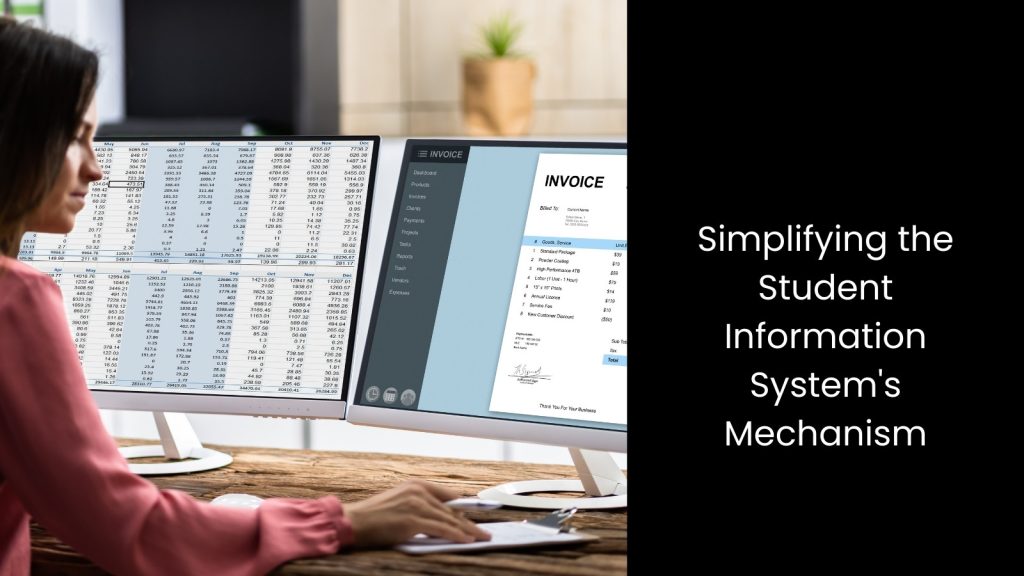Student information is not just names on a list. It is actually the backbone of every school, shaping everything from attendance records to report cards. Yet, managing this data manually feels like trying to organise a library without a catalogue. That is where a ‘Student Information Management System (SIMS)’ steps in, turning chaos into order. Schools no longer struggle with missing records or last-minute report errors because this technology automates everything from student enrolment to performance tracking. With digital dashboards, administrators, teachers, and even parents access real-time updates at the click of a button. In today’s hasty education landscape, relying on outdated methods slows everything down. Schools that adopt a Student Information Management System gain efficiency, accuracy, and seamless communication.
So, what exactly is SIMS, and why does every modern school need it? Let us break it down.
We will discover
Simplifying the Student Information System's Mechanism

- The student information system is a smart software that helps schools store, manage, and track student data in one place.
- The beauty of the latter is that some systems work alone, while others connect with learning management platforms, finance software, or parent portals for a smooth experience. Schools use this system because handling student records, grades, attendance, and schedules gets messy without digital support.
- As education grows more complex, a reliable student information system keeps everything organised and makes tasks easier for teachers, administrators, and parents.
- What is the process behind this? It works by collecting data from different sources and displaying it on dashboards that offer quick insights. Administrators can check student performance, attendance trends, and enrolment details at a glance. Teachers get an easy way to update grades and communicate with parents, while students can see their schedules and academic progress in real-time.
- Since it has proven its true value in the education landscape, more and more schools tend to move forward with student information systems nowadays.
Key Benefits of Student Information Systems for Schools

Encouraging Data-Driven Decision Making
Decisions are the foundation of running a successful school, and a student information system turns raw data into clear insights that help administrators, teachers, and parents make smarter choices. Schools collect tons of information every day, from attendance records to test scores, but without a system to organise and analyse it, that data means nothing.
A student information system makes sense of it all by tracking academic progress, spotting trends, and identifying students who need extra support. Administrators use real-time dashboards to monitor school performance, adjust resources, and improve learning outcomes. Similarly, teachers check reports to see which students struggle with specific subjects and allow them to adjust lesson plans or provide targeted help. Parents stay informed about their child’s progress through instant updates, helping them step in when needed.
This system also helps with enrolment planning by analysing student numbers and predicting future needs. Instead of guessing or relying on outdated methods, schools rely on accurate data to improve decision-making.
Simplifying the Communication and Collaboration Process
When several parties are involved in managing student progress, miscommunication happens easily, but a student information system removes that confusion by keeping everyone connected in one place.
Schools need smooth communication between teachers, administrators, parents, and students, and this system makes that possible through instant updates, notifications, and shared access to important information.
Teachers can quickly send messages about attendance, grades, or upcoming assignments without relying on emails or phone calls. On the other hand, parents can check their child’s academic progress, attendance records, and school announcements anytime. This capacity will make them more involved in their child’s education.
Further, administrators can use the system to send school-wide alerts, schedule meetings, and ensure that staff members stay informed about policy updates or important events. Instead of scrambling through paperwork or waiting for responses, staff members find everything they need in a few clicks.
It is interesting to explore how students also benefit from real-time access to schedules, assignments, and teacher feedback. This potential helps them stay organised and take responsibility for their learning.
This way, a student information system keeps communication flowing by reducing delays and keeping everyone on the same page. With education becoming more fast-paced, a student information system makes sure schools stay ahead by simplifying communication and improving teamwork between everyone involved in a student’s success.
Streamlining Administrative Framework
School administration is similar to running a complex machine. That is why the schools need to keep everything running smoothly without unnecessary delays.
Managing admissions, tracking attendance, handling fee payments, and generating reports can become overwhelming when done manually, but this system simplifies the entire process by automating routine tasks.
Let us explain how this works: administrators handle enrolment and student records with just a few clicks and avoid the hassle of paperwork and long processing times. Attendance tracking becomes effortless since the system records student presence in real time. This reduces errors and saves teachers valuable time.
As one of the most chaotic aspects, fee management also becomes more organised as schools send automated payment reminders, track dues, and generate receipts without juggling multiple spreadsheets. Report generation, which used to take hours, now happens instantly, allowing school staff to access detailed insights about student performance, teacher efficiency, and overall school operations.
It is indeed a good thing that teachers also benefit because grading, scheduling, and classroom management tools keep everything in one place. This reduces unnecessary workload. This structured approach allows schools to focus on improving education instead of struggling with administrative inefficiencies.
Boosting Parent Engagement
Parents are one branch of a student’s success, but staying updated on their child’s academic progress gets tricky with traditional communication methods.
This is the main reason schools have stepped into the realm of student information systems. The latter removes this gap by giving parents instant access to attendance records, grades, assignments, and school announcements in one easy-to-use platform.
Instead of waiting for report cards or parent-teacher meetings, parents check real-time updates and step in when necessary. Automated notifications alert them if their child misses class, struggles with a subject, or has an upcoming test. This allows them to take action before small issues turn into bigger problems.
As we mentioned above, fee payment reminders, event schedules, and school notices also reach parents without delay. So, this ability helps reduce confusion and keep them in the loop. Direct messaging features let parents communicate with teachers without scheduling long meetings, making collaboration easier. When parents stay informed, students receive better support at home, which improves motivation and academic performance.
Likewise, the student information system keeps the connection between schools and families strong. In one way, it ensures that parents remain involved and informed, and in another way, it makes them ready to support their child’s education every step of the way.
Scalable and Highly Adaptable for Future Expansion
In a dynamic world that evolves every single day, schools need systems that grow with them instead of holding them back. This system stays scalable and highly adaptable, making it perfect for institutions planning future expansion.
As student numbers increase, manual processes slow down, and outdated software struggles to keep up. This system handles rising enrolments without compromising speed or efficiency, allowing schools to add new students, teachers, and courses without hassle. Cloud-based platforms make it even easier since schools expand operations without worrying about storage limits or hardware upgrades.
Its customisable features let administrators modify workflows, add new functions, and integrate third-party applications to match their evolving needs. Whether a school introduces online learning, new grading policies, or multi-campus management, the system adjusts without major disruptions.
Plus, its automation power reduces administrative workload, so staff focus on improving student services instead of fixing outdated records. Real-time data insights help decision-makers plan future developments based on accurate trends rather than guesswork.
This level of flexibility ensures that as education demands shift, schools stay prepared without costly system overhauls.
Improving Student Support
How can schools truly support students if they do not have a clear picture of their academic progress, attendance, and overall well-being?
The latter makes this easier by collecting and organising data that helps educators understand each student’s needs. Teachers track attendance patterns and identify students who miss classes frequently, allowing them to step in before the situation gets worse.
On the other hand, performance reports highlight subjects where a student struggles, so schools provide extra tutoring or resources to improve learning outcomes. Counsellors also benefit from this system since they access behavioural records and emotional well-being reports. This makes it easier to guide students who need support.
A plus point is that automated alerts notify teachers and parents about sudden drops in performance. This will ensure that students do not fall behind unnoticed. Communication tools allow students to reach out for help, whether for academic assistance or personal guidance, creating a safe space where they feel heard.
With all this information in one place, schools no longer guess what a student needs. They can respond with precise solutions now!
Handling Student Information Easily Utilising Best Technologies

Managing student information should not be a headache for the management when modern school management systems exist. With built-in student information database features, schools can streamline records, improve communication, and make data-driven decisions effortlessly. Investing in the right technology from the right partner is the path schools should walk down in today’s time.

